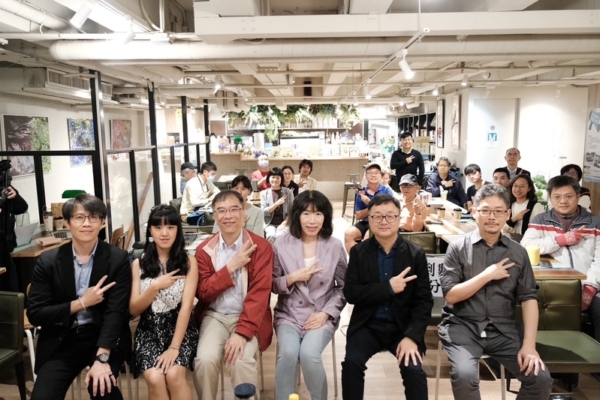Taiwan Public Policy, Taiwan Think Tank and several other units jointly held a seminar on “Small Islands, Big Strategies – The Role of Outlying Islands in Cross-Strait Relations” on the 12th. Analysts pointed out that residents of Kinmen and Matsu have become a key target of the Chinese Communist Party’s United Front strategy. People on Kinmen and Matsu are unwilling to accept the rule from across the strait.
Host and Professor of Ocean University of Taiwan’s Law and Political Science Institute, Jiang Yaqi, stated that the outlying islands of Kinmen and Matsu have a unique war history and social background. They are not only the vanguard of democracy’s defense line and a key in geopolitics but also have a different way of life compared to Taiwan’s main island. “Many have visited the beautiful outlying islands as tourists, but few have truly understood the people on these islands and their complex ties with the mainland. By focusing on the outlying islands, we gain a new perspective distinct from Taiwan’s main island.”
Deputy Executive Director of Taiwan Think Tank, Dong Siqi, mentioned that residents of Kinmen and Matsu, living within the cross-strait circle, blend local identity with deep ties to Fujian. This multiple identity makes Kinmen and Matsu play complex dual roles in cross-strait interactions and become a key target of the CCP’s United Front strategy.
Dong Siqi emphasized that Kinmen and Matsu are not only Taiwan’s defense front line but also carry the burden of identity conflicts amid cross-strait tensions. From the historical “Military Government Experimental Zone” to present-day Chinese military pressure, residents of Kinmen and Matsu adapt their positions in the challenging cross-strait environment. He urged the younger generation to pay attention to the real voices of Kinmen and Matsu residents, understand the needs and lives of different ethnic groups, and in promoting Taiwan’s future development, acknowledge the outlying islanders’ circumstances from a diverse perspective. Additionally, there should be a deepening of national collective consciousness to promote peace and development in the country and region.
President of Taiwan Professor Association, Chen Lifu, stressed the importance of understanding the developmental context of outlying islands, urging to set aside a Taiwan-centric view to empathize with the residents’ way of life. Each outlying island in Taiwan’s north, south, east, and west presents unique characteristics. Kinmen and Matsu residents are mainly engaged in agriculture and implemented the imperial examination system earlier than Taiwan; Dongsha Islands are uninhabited coral islands that only became Taiwan’s outlying islands in the 1960s; Green Island was incorporated into Taiwan by the Qing Dynasty in 1874, while nearby Orchid Island was part of Taiwan following negotiations between Spain and the Japanese Empire.
Chen Lifu stated, “These different historical backgrounds give each outlying island its own culture. Just as we must understand and recognize the historical context for Kinmen and Matsu.”
Associate Professor at National Chengchi University’s East Asia Studies, Wang Yun, pointed out that while Kinmen and Matsu residents also pay taxes, they bear more frontline military defense duties than mainlanders. They not only face difficulties in healthcare and transportation but also lack access to convenient services such as online shopping and express delivery enjoyed by mainlanders. Wang Yun noted, “Mainlanders have a duty to consider and empathize with another group of people who possess Republic of China passports but have very different life experiences.”
Assistant Research Fellow at the First Research Institute of the Chung-Hua Institution for Economic Research, Chen Wen-gen, noted that mainlanders often perceive Kinmen and Matsu residents as “prioritizing the economy over democracy,” but this is a misconception and does not accurately reflect the outlying islanders. In historical contexts, Kinmen and Matsu residents faced strict restrictions during the Mobilization for the Suppression of Communist Rebellion, which included using specialized currency, being unable to listen to broadcasts, restricted mobility, and falling behind in economic, transportation, and medical development compared to the main island. Understanding this history allows for greater empathy towards the frustrations, disappointments, and urgent desires of the outlying islanders to catch up with progress.
Secretary-General of the Straits Exchange Foundation, Luo Wenjia, emphasized that the periphery and the center are opposing concepts depending on the speaker’s standpoint. If China is considered the center, then the entirety of Taiwan is a periphery within a periphery. The term “outlying islands” clearly signifies a departure from China-centric perspectives to one rooted in Taiwan.
Luo Wenjia said, “When our country’s development moves towards diversity, inclusivity, and respect, issues concerning outlying islands with distinctive cultures become increasingly important. From a historical and cultural context, Kinmen and Matsu are not necessarily the way they are now. Today, Kinmen and Matsu are products of history, where small fishing villages suddenly became frontline defenders against the Communist forces, forged into military fortresses, developing the resilient character of Kinmen and Matsu residents.”
Luo Wenjia stressed, “Today, Taiwan, Penghu, Kinmen, and Matsu form a shared destiny community of democracy and culture. This is not just the culture of Taiwan’s islands but a new culture that belongs to all our compatriots after fusion and communication. While the CCP may view Kinmen and Matsu as a model “integration demonstration area,” public opinion surveys have shown that residents of Kinmen and Matsu are unwilling to accept rule from the mainland, especially the younger generation, who lean towards a lifestyle of freedom, diversity, and democracy, more prominently showcasing the unity of Taiwan, Penghu, Kinmen, and Matsu.”

